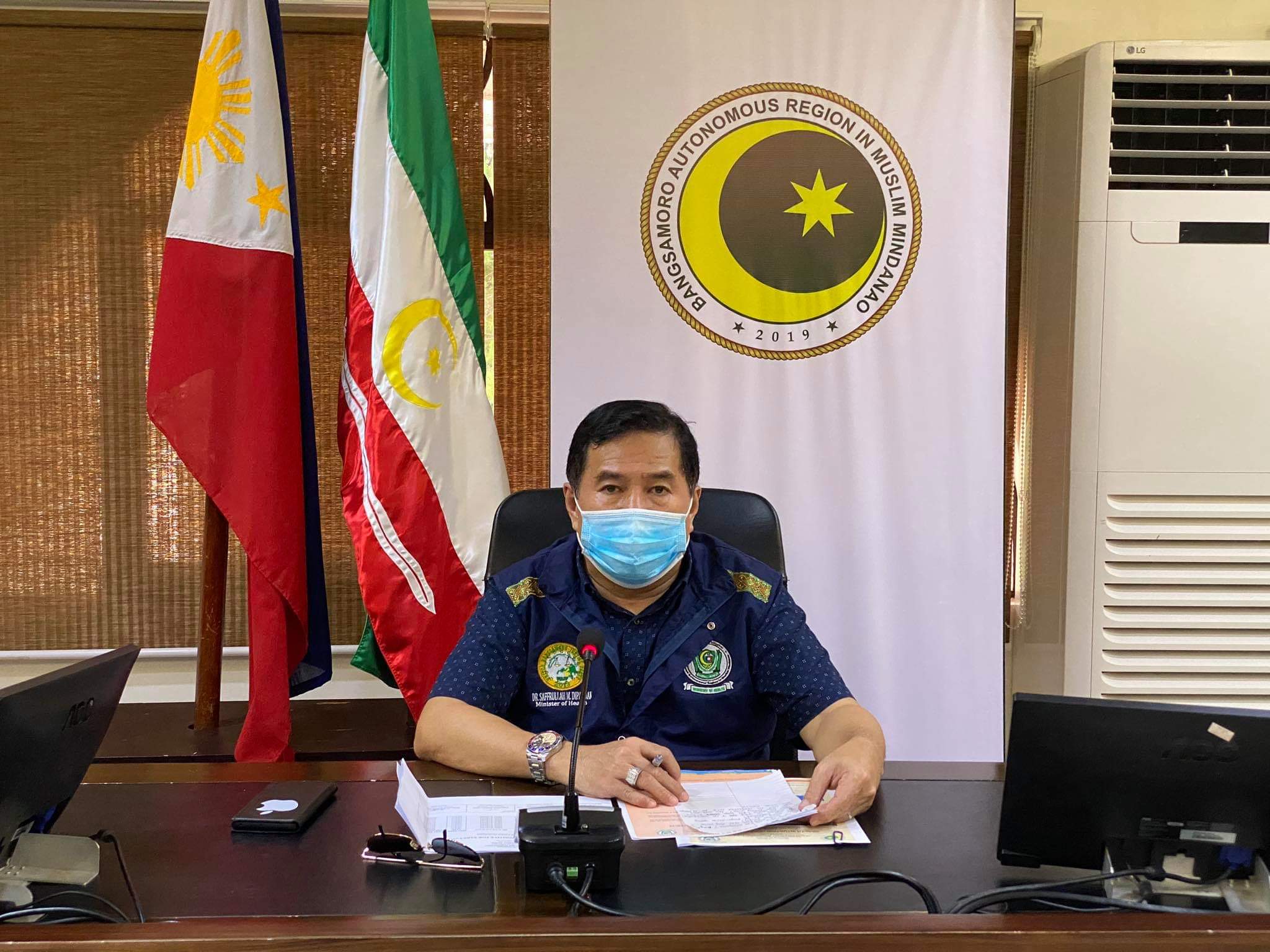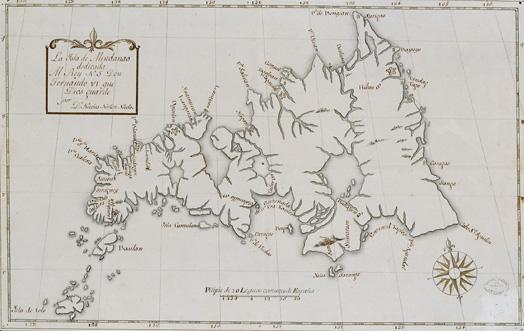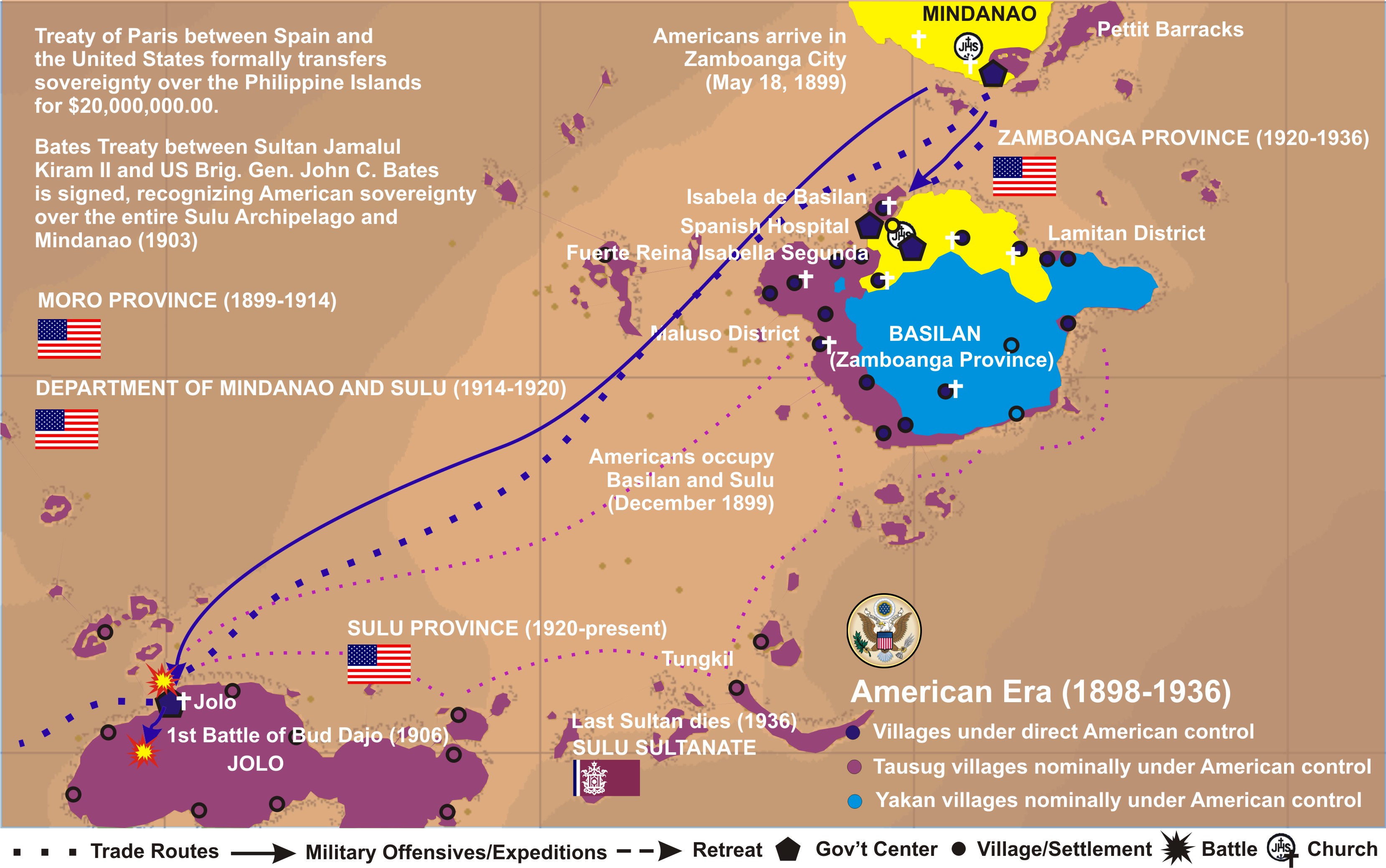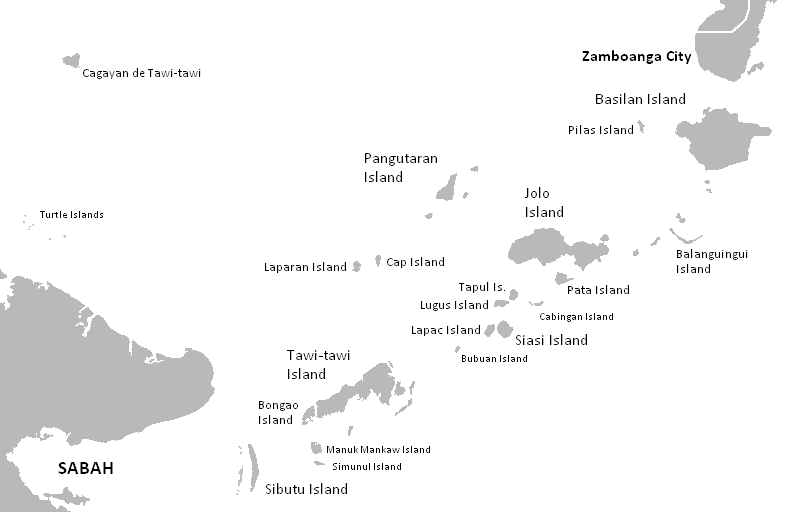|
Moro People
The Moro people or Bangsamoro people are the 13 Muslim-majority ethnolinguistic Austronesian groups of Mindanao, Sulu, and Palawan, native to the region known as the Bangsamoro (lit. ''Moro nation'' or ''Moro country''). As Muslim-majority ethnic groups, they form the largest non-Christian population in the Philippines, and according the 2020 census conducted by the Philippine Statistics Authority, they comprise about 6.5% of the country's total population, or 7.1 million people. Most Moros are followers of Sunni Islam of the Shafiʽi school of fiqh. The Moros were once independent under a variety of local states, including the Sultanate of Sulu, the Sultanate of Maguindanao, and the Confederation of sultanates in Lanao; withstanding repeated Spanish invasions, the Moro states remained de facto independent up until the Moro Rebellion of the early 20th century. Upon Philippine independence in 1946, the Moros continued their struggle for self-determination against a predom ... [...More Info...] [...Related Items...] OR: [Wikipedia] [Google] [Baidu] |
Flag Of Bangsamoro
The flag of the Bangsamoro Autonomous Region in Muslim Mindanao, an Autonomous regions of the Philippines, autonomous region of the Philippines, is a horizontal tricolor of green, white and red with the yellow seven-pointed star surrounded by a yellow crescent both centered on the white band and a white kris centered on the red band. It was adopted in 2019. History Under the Bangsamoro Organic Law, the charter of the Bangsamoro Autonomous Region in Muslim Mindanao (BARMM) which succeeded the Autonomous Region in Muslim Mindanao (ARMM) is entitled to have its own regional flag and emblem. The ARMM also had its own flag. Prior to the ratification of the Bangsamoro Organic Law, there was opposition to then proposed Bangsamoro region to having its own flag. The Philippine Constitution Association and Buhay Party-List, Buhay Partylist Representative Lito Atienza argued that a separate flag for the Bangsamoro region is unconstitutional. Atienza says that a separate flag for the regio ... [...More Info...] [...Related Items...] OR: [Wikipedia] [Google] [Baidu] |
Mindanao
Mindanao ( ) is the List of islands of the Philippines, second-largest island in the Philippines, after Luzon, and List of islands by population, seventh-most populous island in the world. Located in the southern region of the archipelago, the island is part of an island group of the same name that also includes its adjacent islands, notably the Sulu Archipelago. According to the 2020 census, Mindanao had a population of 26,252,442, while the entire island group had an estimated population of 27,021,036. Mindanao is divided into six administrative regions: the Zamboanga Peninsula, Northern Mindanao, the Caraga region, the Davao Region, Davao region, Soccsksargen, and the autonomous region of Bangsamoro. According to the 2020 census, Davao City is the most populous city on the island, with 1,776,949 people, followed by Zamboanga City (pop. 977,234), Cagayan de Oro (pop. 728,402), General Santos (pop. 697,315), Butuan (pop. 372,910), Iligan (pop. 363,115) and Cotabato City (pop. ... [...More Info...] [...Related Items...] OR: [Wikipedia] [Google] [Baidu] |
Moro Rebellion
The Moro Rebellion (1902–1913) was an armed conflict between the Moro people and the United States military during the Philippine–American War. The rebellion occurred after the conclusion of the conflict between the United States and First Philippine Republic, and saw the US move to impose its authority over the Muslim states in Mindanao, Jolo and the neighboring Sulu Archipelago. Background The Moros have a 400-year history of resisting foreign rule. The violent armed struggle against the Spanish, against the Americans, against the Japanese, and against the Filipinos, is considered by current Moro leaders as part of the four centuries-long "national liberation movement" of the Bangsamoro (Moro Nation). This conflict persisted and developed into their current war for independence against the Philippine state. A "culture of jihad" emerged among the Moros due to the centuries-long war against the Spanish invaders. The ethnic Moro population of the southern Philippin ... [...More Info...] [...Related Items...] OR: [Wikipedia] [Google] [Baidu] |
Confederate States Of Lanao
The Confederate States of Lanao (Maranao language, Maranao: ''Pat a Pangampong sa Ranao'', "Four States of Lanao") is a legislative confederation of the four Maranao states (''pangampong'') of Bayabao, Masiu, Unayan, and Balo-i centered around Lake Lanao in the center of the island of Mindanao, Philippines. This confederation is also sometimes inaccurately referred to as simply the Lanao Sultanate or Sultanate of Lanao. The Confederate States of Lanao, specifically its sultanates, still exists in modern-day Lanao del Sur and Lanao del Norte. However, all of the Lanao royal houses do not hold any political power in the Philippines. History Before the Maranaos were invaded by the Sultanate of Maguindanao, it already existed as a separate nation. The Chinese chronicle ''Zhufan Zhi'' (諸蕃志) published in 1225, described it as a country southeast of Shahuagong (Sanmalan) in present-day Zamboanga City, a country called "Maluonu", of which this is what the chronicles have to say. ... [...More Info...] [...Related Items...] OR: [Wikipedia] [Google] [Baidu] |
Sultanate Of Maguindanao
The Sultanate of Maguindanao ( Maguindanaon: ''Kasultanan nu Magindanaw'', Jawi: كسولتانن نو مڬیندنو; Filipino: ''Kasultanan ng Mangindánaw'') was a Sunni Muslim sultanate that ruled parts of the island of Mindanao, in the southern Philippines, especially in modern-day Maguindanao provinces ( Maguindanao del Sur and Maguindanao del Norte), Soccsksargen, Zamboanga Peninsula and Davao Region. Its known historical influence stretches from the peninsula of Zamboanga to bay of Sarangani until Davao Gulf. During the era of European colonization, the sultanate maintained friendly relations with British and Dutch traders. History Chinese records According to the Yuan annals of 1304 in the ''Nanhai Zhi'', a polity known as Wenduling or BintolangWenduling is the Mandarin transliteration, while Bintolang is the Hokkien transliteration for the Chinese characters 文杜陵. (文杜陵) was once a vassal state of Po-ni. According to Wang Zhenping, Wenduling ... [...More Info...] [...Related Items...] OR: [Wikipedia] [Google] [Baidu] |
Sultanate Of Sulu
The Sultanate of Sulu (; ; ) is a Sunni Muslim subnational monarchy in the Philippines, Republic of the Philippines that includes the Sulu Archipelago, coastal areas of Zamboanga City and certain portions of Palawan in today's Philippines. Historically, the Sultanate included parts of present-day Sabah and North Kalimantan in north-eastern Borneo, but Malaysia does not recognize the territory of North Borneo as part of the Sultanate. The sultanate was founded either on 17 November 1405 or 1457 by Johore-born explorer and Sunni religious scholar Sharif ul-Hāshim of Sulu, Sharif ul-Hashim. ''Paduka Mahasari Maulana al Sultan Sharif ul-Hashim'' became his full regnal name; ''Sharif-ul Hashim'' is his abbreviated name. He settled in Buansa, Sulu. The sultanate gained its independence from the Bruneian Empire in 1578. At its peak, it stretched over the islands that bordered the western peninsula of Zamboanga Peninsula, Zamboanga in Mindanao in the east to Palawan in the north. ... [...More Info...] [...Related Items...] OR: [Wikipedia] [Google] [Baidu] |
Fiqh
''Fiqh'' (; ) is the term for Islamic jurisprudence.Fiqh Encyclopædia Britannica ''Fiqh'' is often described as the style of human understanding, research and practices of the sharia; that is, human understanding of the divine Islamic law as revealed in the Quran and the sunnah (the teachings and practices of the Islamic prophet Muhammad and his companions). Fiqh expands and develops Shariah through interpretation (''ijtihad'') of the Quran and ''Sunnah'' by Islamic jurists (''ulama'') and is implemented by the rulings (''fatwa'') of jurists on questions presented to them. Thus, whereas ''sharia'' is considered immutable and infallible by Muslims, ''fiqh'' is considered fallible and changeable. ''Fiqh'' deals with the observance of rituals, morals and social legislation in Islam as well as econo ... [...More Info...] [...Related Items...] OR: [Wikipedia] [Google] [Baidu] |
Shafiʽi School
The Shafi'i school or Shafi'i Madhhab () or Shafi'i is one of the four major schools of fiqh (Islamic jurisprudence), belonging to the Ahl al-Hadith tradition within Sunni Islam. It was founded by the Muslim scholar, jurist, and traditionist al-Shafi'i (), "the father of Muslim jurisprudence", in the early 9th century. The other three schools of Sunnī jurisprudence are Ḥanafī, Mālikī and Ḥanbalī. Like the other schools of fiqh, Shafii recognize the First Four Caliphs as the Islamic prophet Muhammad's rightful successors and relies on the Qurʾān and the "sound" books of Ḥadīths as primary sources of law. The Shafi'i school affirms the authority of both divine law-giving (the Qurʾān and the Sunnah) and human speculation regarding the Law. Where passages of Qurʾān and/or the Ḥadīths are ambiguous, the school seeks guidance of Qiyās (analogical reasoning). The Ijmā' (consensus of scholars or of the community) was "accepted but not stressed". The school ... [...More Info...] [...Related Items...] OR: [Wikipedia] [Google] [Baidu] |
Philippine Statistics Authority
The Philippine Statistics Authority (; PSA) is the central statistical authority of the Philippine government that collects, compiles, analyzes, and publishes statistical information on economic, social, demographic, political affairs, and general affairs of the people of the Philippines, as well as enforcing the civil registration functions in the country. It is an attached agency of the Department of Economy, Planning, and Development (DEPDev) for purposes of policy coordination. The PSA comprises the PSA Board and offices on sectoral statistics, censuses and technical coordination, civil registration, Philippine registry office, central support, and field statistical services. The ''National Statistician'', who is appointed by the president of the Philippines from a list of nominees submitted by a Special Committee and endorsed by the PSA Board Chairperson, is the head of the PSA and has a rank equivalent to an Undersecretary. Aside from directing and supervising the genera ... [...More Info...] [...Related Items...] OR: [Wikipedia] [Google] [Baidu] |
ReliefWeb
ReliefWeb (RW) is a humanitarian information portal founded in 1996. , it hosts more than one million humanitarian situation reports, press releases, evaluations, guidelines, assessments, maps and infographics. The portal is an independent source of information, designed specifically to assist the international humanitarian community in effective delivery of emergency assistance or ''relief''. It provides information as humanitarian crises unfold, while emphasizing the coverage of "forgotten emergencies" at the same time. Origin and development ReliefWeb was founded in October 1996 and is administered by the United Nations Office for the Coordination of Humanitarian Affairs (OCHA). The project began under the US Department of State, Bureau of International Organization Affairs, which had noticed during the Rwanda crisis how poorly critical operational information was shared between NGOs, UN Agencies and Governments. In 1995, the Department's Senior Policy Adviser on Disaster ... [...More Info...] [...Related Items...] OR: [Wikipedia] [Google] [Baidu] |
Norwegian Refugee Council
The Norwegian Refugee Council (NRC; ) is a humanitarian, non-governmental organisation that protects the rights of people affected by displacement. This includes refugees and internally displaced persons who are forced to flee their homes as a result of conflict, human rights violations and acute violence, as well as climate change and natural disasters. History NRC is politically independent and has no religious affiliation. It is the only Norwegian organisation that specialises in international efforts to provide assistance, protection and durable solutions for people affected by displacement. NRC employs approximately 16,500 staff members and incentive workers in 40 countries throughout Africa, Asia, South America, Europe and the Middle East. The NRC headquarters is located in Oslo and has about 280 employees. Additionally the organisation has a presence in Brussels, Geneva, Washington, D.C., Berlin, London and Addis Ababa. NRC was established in 1946 under the name "Europahj ... [...More Info...] [...Related Items...] OR: [Wikipedia] [Google] [Baidu] |
Christianity In The Philippines
The Philippines is ranked as the 5th largest Christian-majority country on Earth , with about 93% of the population being adherents. , it was the Catholicism by country#By country, third largest Catholic country in the world and was one of two predominantly Catholic nations in Asia. According to the Philippine Statistics Authority, National Statistics Office's national census for the year 2010, an estimated 90.1% of Filipinos were Christians; this consisted of 80.6% Catholic Church in the Philippines, Catholic, 4% Iglesia ni Cristo, 1.0% Iglesia Filipina Independiente, Aglipayan, 2.7% Evangelicalism in the Philippines, Evangelical groups, and 3.4% other Christian groups including other Protestantism in the Philippines, Protestant denominations (Baptist, Pentecostal, Episcopal Church in the Philippines, Anglican, Methodist, and Seventh-day Adventist Church, Seventh-day Adventist) as well as Eastern Orthodoxy in the Philippines, Orthodox. Around 5.6% of the whole country was Islam ... [...More Info...] [...Related Items...] OR: [Wikipedia] [Google] [Baidu] |







